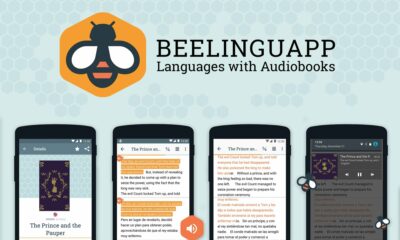MARKETING
5 Surprising SEO Test Results — Whiteboard Friday

The author’s views are entirely his or her own (excluding the unlikely event of hypnosis) and may not always reflect the views of Moz.
SEO testing expert Emily Potter joins us once again to wrap up this season of Whiteboard Friday! Today, she takes you through a few tests that generated unexpected results for her team at SearchPilot, and what those results mean for SEO strategy.
Enjoy, and stay tuned for the next season of Whiteboard Friday episodes, expected later this summer!

Click on the whiteboard image above to open a high resolution version in a new tab!
Video Transcription
Howdy, Moz fans. I’m Emily Potter. I’m Head of Customer Success at SearchPilot. If you haven’t heard of us before, we’re an SEO A/B testing platform. We run large-scale SEO tests on enterprise websites.
So that’s websites in industries like travel, e-commerce, or listing websites, anything that has lots of traffic and lots of templated pages. Today I’m here to share with you five of our most surprising test results that we’ve run at SearchPilot. Part of a successful SEO testing program is getting used to being surprised a heck of a lot, whether that’s because something you really thought was going to work ends up not, an SEO best practice test that ends up actually hurting your organic traffic, or something that you’ve tested just because you could that ends up being a winner.
All of our customers and us as well get surprised all the time at SearchPilot, but that’s what makes testing so important. If you’re a large enterprise website, then testing is what gives you a competitive edge. It helps you find those things that your competitors maybe wouldn’t, especially if they’re not testing, and it helps you stop yourself from rolling out changes that would harm your organic traffic that you maybe would have had you not been able to test them.
Or sometimes it’s as simple as giving you a business case to get the backing that you need to roll out something on your website that you were going to do anyway but maybe didn’t have the buy-in from other stakeholders. If you want to learn more about how we run tests at SearchPilot and how we control for things like seasonality, algorithm updates, and all that, go to our website and there’s lots of resources there.
1. Using ‘data-nosnippet’ to force Google to show custom meta descriptions
Okay, the first test I’m going to share with you today is a customer that used the data-nosnippet attribute to force Google to respect its meta descriptions. As you probably know, Google now overwrites meta descriptions as well as title tags, and this can be really frustrating. In the case of meta descriptions, sometimes it brings in text that’s strung together with ellipses, it’s not very readable, it doesn’t have good grammar, and a lot of SEOs find this frustrating.
So to get Google to show our meta descriptions instead, our customer added the data-nosnippet attribute to the body tag. What the data-nosnippet attribute does is it tells robots, like Googlebot, I don’t want you to scrape any of this content. So by putting it on the body tag, we effectively forced Google to use what was in the head, i.e., the meta description.
As you can see, this was negative. It led to a 3% loss in organic traffic. As far as SEO tests go, that’s actually a pretty small loss, but that’s still not something you want to deploy and why would you lose any traffic at all if you know that’s something going to hurt. So in this case, it turns out Google maybe is actually better at writing meta descriptions than we are.
So maybe meta descriptions aren’t a thing we should be spending so much time on as SEOs. Meta descriptions we’re finding at SearchPilot are very hard to ever come up with something that’s positive, and oftentimes, we’ve run this a couple times on different industries and different websites, actually Google is better at writing them than we are anyway.
So maybe let’s just let the robots do the work.
2. Increasing the number of related article links
Our second test was on an e-commerce website. This was on the blog portion of their website, where they had blog content related to their products. At the bottom of every article, there were two related article links. In this test, we increased that from two to four.
Now running internal linking experiments is complicated because we’re impacting both the pages where we’re adding the links and we’re impacting the pages that receive the links. So we have to make sure that we’re controlling for both. Again, if you want to learn more about how we do that, you can check out our website or follow up with me after. Now, in this case, this was an 11% increase in organic traffic, which maybe doesn’t seem surprising because it’s links, we know that they work.
Why do I have this included on five surprising test results then? I have this included because actually this was to the donor pages. So by that I mean the pages where we added the links. The pages that were receiving the links, actually we didn’t see any detectable impact for organic traffic. That was really surprising, and it goes to show that links do more than just pass on link equity.
They actually help robots understand your page better. They can be a way to associate different bits of content together. So they actually might have benefit to both pages. This is also why it’s so important to make a controlled experiment if you’re doing internal linking tests. One, if we were just measuring the impact on the pages that were receiving them, we wouldn’t have found this one at all.
Or oftentimes, not often but sometimes at SearchPilot we’ve actually seen this be positive for one group and negative for another. So it’s really important to find out the net impact.
3. Localizing product content on U.S. e-commerce website
Our third test that I’m going to share with you today is when we localize content on product pages for an e-commerce website in the U.S.
So that was changing things like trousers to pants. This was a website that was originally based in the UK. They rolled out in the U.S. market, and they just kept the UK content when they did that. So we wanted to figure out what would happen if we updated that and made it actually fit the market that we were in. This was a 24% increase in organic traffic.
Now, to me, that was surprising the magnitude of how much of a difference that made. But I suppose that isn’t surprising if you think about it. If trousers doesn’t get very many searches per month in the U.S. but pants does, then I guess you would expect localizing that content to improve your organic traffic.
So places where this content existed was like the meta title, the meta description, H1, and things like that. If nothing else, this is just a nice indication that sometimes normal SEO recommendations actually work, and this was a great example of one that they were able to make a business case to get their devs to implement a change that they might not have been able to convince them was very important otherwise.
4. Adding prices to title tags
Test number four, adding prices to the titles. Again, an e-commerce website. You would think best practice recommendation have the price in the title. That’s something users want to see. But, as you can see here, this was actually negative, and it was a 15% drop to organic traffic, so pretty substantial.
Important context here though. One of our hypotheses was our competitors in the SERP weren’t using prices in the title tag but instead had price snippets that were coming from structured markup. So maybe users just didn’t respond well to seeing something different to what other competitors had in the SERP.
It’s also possible that our prices weren’t as competitive, and putting them front and center in our title tag didn’t help us because it made it clear that some of the other search competitors we had had better prices. In any case, we didn’t deploy this change. But this is an important lesson in no two websites are the same.
We’ve run this test a lot of times at SearchPilot, and we’ve seen positive, we’ve seen negative, and we’ve seen inconclusive results with this. So there is no one-size-fits-all approach with SEO, and there’s nothing that’s an absolute truth and even something as simple as adding prices to your title tags.
5. Adding keyword-rich alt text
The final test I’m going to share with you today was when we added keyword rich alt text to images on the product page. As you can see, this had no detectable impact, which this is a common SEO recommendation. This is a common thing that comes up in things like tech audits or big deliverables that you give to a potential new customer.
Here, we found it actually didn’t have much of an impact. That suggests that alt text doesn’t have much impact on rankings. However, there are other really important reasons we would implement alt text, and we decided to deploy this anyway. Number one being accessibility.
Alt text helps your images become more accessible for those that maybe can’t see them, and it helps bots be able to explain what’s on the page. Or if something is just not rendering, then it helps people be able to still know what they’re looking at. So alt text, although maybe not a big winner for SEO traffic, is still an important implementation and not something we want to forget about.
That’s all that I have to share with you today. If you thought this was interesting and you want to get more case studies like these, you can sign up to our case study email list, which every two weeks we release a case study email and that includes a different case study. You can also find all the ones that we’ve done in the past on our website. So even if you can’t run SEO tests or you’re not a large enterprise website, you can still use the learnings that we have to help you make some business cases at your company.
Thanks for having me. Bye, Moz.
Video transcription by Speechpad.com
MARKETING
YouTube Ad Specs, Sizes, and Examples [2024 Update]
![YouTube Ad Specs, Sizes, and Examples [2024 Update] YouTube Ad Specs, Sizes, and Examples](https://articles.entireweb.com/wp-content/uploads/2024/06/YouTube-Ad-Specs-Sizes-and-Examples.jpg)
Introduction
With billions of users each month, YouTube is the world’s second largest search engine and top website for video content. This makes it a great place for advertising. To succeed, advertisers need to follow the correct YouTube ad specifications. These rules help your ad reach more viewers, increasing the chance of gaining new customers and boosting brand awareness.
Types of YouTube Ads
Video Ads
- Description: These play before, during, or after a YouTube video on computers or mobile devices.
- Types:
- In-stream ads: Can be skippable or non-skippable.
- Bumper ads: Non-skippable, short ads that play before, during, or after a video.
Display Ads
- Description: These appear in different spots on YouTube and usually use text or static images.
- Note: YouTube does not support display image ads directly on its app, but these can be targeted to YouTube.com through Google Display Network (GDN).
Companion Banners
- Description: Appears to the right of the YouTube player on desktop.
- Requirement: Must be purchased alongside In-stream ads, Bumper ads, or In-feed ads.
In-feed Ads
- Description: Resemble videos with images, headlines, and text. They link to a public or unlisted YouTube video.
Outstream Ads
- Description: Mobile-only video ads that play outside of YouTube, on websites and apps within the Google video partner network.
Masthead Ads
- Description: Premium, high-visibility banner ads displayed at the top of the YouTube homepage for both desktop and mobile users.
YouTube Ad Specs by Type
Skippable In-stream Video Ads
- Placement: Before, during, or after a YouTube video.
- Resolution:
- Horizontal: 1920 x 1080px
- Vertical: 1080 x 1920px
- Square: 1080 x 1080px
- Aspect Ratio:
- Horizontal: 16:9
- Vertical: 9:16
- Square: 1:1
- Length:
- Awareness: 15-20 seconds
- Consideration: 2-3 minutes
- Action: 15-20 seconds
Non-skippable In-stream Video Ads
- Description: Must be watched completely before the main video.
- Length: 15 seconds (or 20 seconds in certain markets).
- Resolution:
- Horizontal: 1920 x 1080px
- Vertical: 1080 x 1920px
- Square: 1080 x 1080px
- Aspect Ratio:
- Horizontal: 16:9
- Vertical: 9:16
- Square: 1:1
Bumper Ads
- Length: Maximum 6 seconds.
- File Format: MP4, Quicktime, AVI, ASF, Windows Media, or MPEG.
- Resolution:
- Horizontal: 640 x 360px
- Vertical: 480 x 360px
In-feed Ads
- Description: Show alongside YouTube content, like search results or the Home feed.
- Resolution:
- Horizontal: 1920 x 1080px
- Vertical: 1080 x 1920px
- Square: 1080 x 1080px
- Aspect Ratio:
- Horizontal: 16:9
- Square: 1:1
- Length:
- Awareness: 15-20 seconds
- Consideration: 2-3 minutes
- Headline/Description:
- Headline: Up to 2 lines, 40 characters per line
- Description: Up to 2 lines, 35 characters per line
Display Ads
- Description: Static images or animated media that appear on YouTube next to video suggestions, in search results, or on the homepage.
- Image Size: 300×60 pixels.
- File Type: GIF, JPG, PNG.
- File Size: Max 150KB.
- Max Animation Length: 30 seconds.
Outstream Ads
- Description: Mobile-only video ads that appear on websites and apps within the Google video partner network, not on YouTube itself.
- Logo Specs:
- Square: 1:1 (200 x 200px).
- File Type: JPG, GIF, PNG.
- Max Size: 200KB.
Masthead Ads
- Description: High-visibility ads at the top of the YouTube homepage.
- Resolution: 1920 x 1080 or higher.
- File Type: JPG or PNG (without transparency).
Conclusion
YouTube offers a variety of ad formats to reach audiences effectively in 2024. Whether you want to build brand awareness, drive conversions, or target specific demographics, YouTube provides a dynamic platform for your advertising needs. Always follow Google’s advertising policies and the technical ad specs to ensure your ads perform their best. Ready to start using YouTube ads? Contact us today to get started!
MARKETING
Why We Are Always ‘Clicking to Buy’, According to Psychologists

Amazon pillows.
MARKETING
A deeper dive into data, personalization and Copilots

Salesforce launched a collection of new, generative AI-related products at Connections in Chicago this week. They included new Einstein Copilots for marketers and merchants and Einstein Personalization.
To better understand, not only the potential impact of the new products, but the evolving Salesforce architecture, we sat down with Bobby Jania, CMO, Marketing Cloud.
Dig deeper: Salesforce piles on the Einstein Copilots
Salesforce’s evolving architecture
It’s hard to deny that Salesforce likes coming up with new names for platforms and products (what happened to Customer 360?) and this can sometimes make the observer wonder if something is brand new, or old but with a brand new name. In particular, what exactly is Einstein 1 and how is it related to Salesforce Data Cloud?
“Data Cloud is built on the Einstein 1 platform,” Jania explained. “The Einstein 1 platform is our entire Salesforce platform and that includes products like Sales Cloud, Service Cloud — that it includes the original idea of Salesforce not just being in the cloud, but being multi-tenancy.”
Data Cloud — not an acquisition, of course — was built natively on that platform. It was the first product built on Hyperforce, Salesforce’s new cloud infrastructure architecture. “Since Data Cloud was on what we now call the Einstein 1 platform from Day One, it has always natively connected to, and been able to read anything in Sales Cloud, Service Cloud [and so on]. On top of that, we can now bring in, not only structured but unstructured data.”
That’s a significant progression from the position, several years ago, when Salesforce had stitched together a platform around various acquisitions (ExactTarget, for example) that didn’t necessarily talk to each other.
“At times, what we would do is have a kind of behind-the-scenes flow where data from one product could be moved into another product,” said Jania, “but in many of those cases the data would then be in both, whereas now the data is in Data Cloud. Tableau will run natively off Data Cloud; Commerce Cloud, Service Cloud, Marketing Cloud — they’re all going to the same operational customer profile.” They’re not copying the data from Data Cloud, Jania confirmed.
Another thing to know is tit’s possible for Salesforce customers to import their own datasets into Data Cloud. “We wanted to create a federated data model,” said Jania. “If you’re using Snowflake, for example, we more or less virtually sit on your data lake. The value we add is that we will look at all your data and help you form these operational customer profiles.”
Let’s learn more about Einstein Copilot
“Copilot means that I have an assistant with me in the tool where I need to be working that contextually knows what I am trying to do and helps me at every step of the process,” Jania said.
For marketers, this might begin with a campaign brief developed with Copilot’s assistance, the identification of an audience based on the brief, and then the development of email or other content. “What’s really cool is the idea of Einstein Studio where our customers will create actions [for Copilot] that we hadn’t even thought about.”
Here’s a key insight (back to nomenclature). We reported on Copilot for markets, Copilot for merchants, Copilot for shoppers. It turns out, however, that there is just one Copilot, Einstein Copilot, and these are use cases. “There’s just one Copilot, we just add these for a little clarity; we’re going to talk about marketing use cases, about shoppers’ use cases. These are actions for the marketing use cases we built out of the box; you can build your own.”
It’s surely going to take a little time for marketers to learn to work easily with Copilot. “There’s always time for adoption,” Jania agreed. “What is directly connected with this is, this is my ninth Connections and this one has the most hands-on training that I’ve seen since 2014 — and a lot of that is getting people using Data Cloud, using these tools rather than just being given a demo.”
What’s new about Einstein Personalization
Salesforce Einstein has been around since 2016 and many of the use cases seem to have involved personalization in various forms. What’s new?
“Einstein Personalization is a real-time decision engine and it’s going to choose next-best-action, next-best-offer. What is new is that it’s a service now that runs natively on top of Data Cloud.” A lot of real-time decision engines need their own set of data that might actually be a subset of data. “Einstein Personalization is going to look holistically at a customer and recommend a next-best-action that could be natively surfaced in Service Cloud, Sales Cloud or Marketing Cloud.”
Finally, trust
One feature of the presentations at Connections was the reassurance that, although public LLMs like ChatGPT could be selected for application to customer data, none of that data would be retained by the LLMs. Is this just a matter of written agreements? No, not just that, said Jania.
“In the Einstein Trust Layer, all of the data, when it connects to an LLM, runs through our gateway. If there was a prompt that had personally identifiable information — a credit card number, an email address — at a mimum, all that is stripped out. The LLMs do not store the output; we store the output for auditing back in Salesforce. Any output that comes back through our gateway is logged in our system; it runs through a toxicity model; and only at the end do we put PII data back into the answer. There are real pieces beyond a handshake that this data is safe.”
-

 WORDPRESS3 days ago
WORDPRESS3 days agoWordPress biz Automattic details WP Engine deal demands • The Register
-
SEARCHENGINES5 days ago
Daily Search Forum Recap: September 30, 2024
-

 SEO7 days ago
SEO7 days agoYoast Co-Founder Suggests A WordPress Contributor Board
-

 SEARCHENGINES6 days ago
SEARCHENGINES6 days agoGoogle Volatility With Gains & Losses, Updated Web Spam Policies, Cache Gone & More Search News
-

 SEO7 days ago
SEO7 days ago6 Things You Can Do to Compete With Big Sites
-
SEARCHENGINES4 days ago
Daily Search Forum Recap: October 1, 2024
-

 SEO6 days ago
SEO6 days agoAn In-Depth Guide For Businesses
-

 AFFILIATE MARKETING6 days ago
AFFILIATE MARKETING6 days agoNvidia CEO Jensen Huang Praises Nuclear Energy to Power AI















You must be logged in to post a comment Login